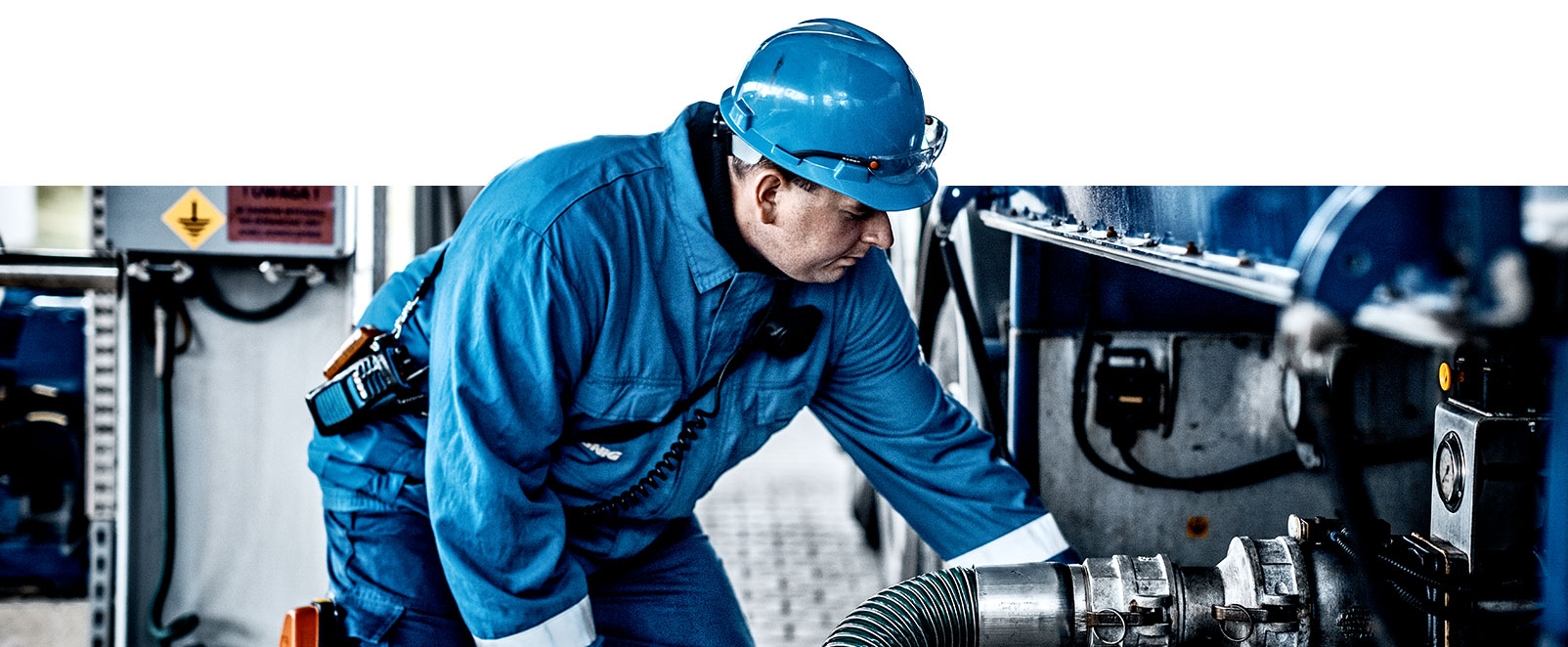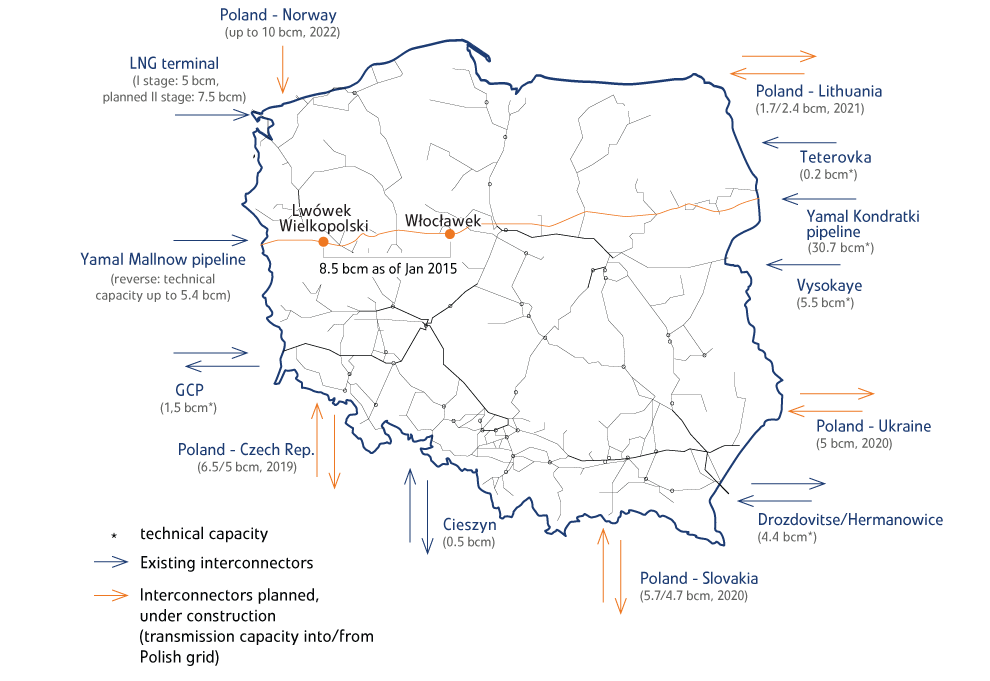"{\"cols\":[{\"id\":\"A\",\"label\":\"miesiąc\",\"type\":\"string\"},{\"id\":\"B\",\"label\":\"TTF spot\",\"type\":\"number\",\"pattern\":\"General\"},{\"id\":\"C\",\"label\":\"tooltip\",\"type\":\"string\"},{\"id\":\"D\",\"label\":\"NCG spot\",\"type\":\"number\",\"pattern\":\"General\"},{\"id\":\"E\",\"label\":\"tooltip\",\"type\":\"string\"},{\"id\":\"F\",\"label\":\"TGE spot\",\"type\":\"number\",\"pattern\":\"General\"},{\"id\":\"G\",\"label\":\"tooltip\",\"type\":\"string\"}],\"rows\":[{\"c\":[{\"v\":\"jan\"},{\"v\":14.65,\"f\":\"14,65\"},{\"v\":\"14,65 [04-01-2016]\"},{\"v\":15.05,\"f\":\"15,05\"},{\"v\":\"15,05 [04-01-2016]\"},{\"v\":17.17247,\"f\":\"17,17247\"},{\"v\":\"17,17 [04-01-2016]\"}]},{\"c\":[null,{\"v\":14.7,\"f\":\"14,7\"},{\"v\":\"14,7 [05-01-2016]\"},{\"v\":15.23,\"f\":\"15,23\"},{\"v\":\"15,23 [05-01-2016]\"},{\"v\":17.31286,\"f\":\"17,31286\"},{\"v\":\"17,31 [05-01-2016]\"}]},{\"c\":[null,{\"v\":15.43,\"f\":\"15,43\"},{\"v\":\"15,43 [07-01-2016]\"},{\"v\":15.75,\"f\":\"15,75\"},{\"v\":\"15,75 [07-01-2016]\"},{\"v\":17.07648,\"f\":\"17,07648\"},{\"v\":\"17,07 [07-01-2016]\"}]},{\"c\":[null,{\"v\":14.57,\"f\":\"14,57\"},{\"v\":\"14,57 [08-01-2016]\"},{\"v\":15.05,\"f\":\"15,05\"},{\"v\":\"15,05 [08-01-2016]\"},{\"v\":16.85574,\"f\":\"16,85574\"},{\"v\":\"16,85 [08-01-2016]\"}]},{\"c\":[null,{\"v\":14.48,\"f\":\"14,48\"},{\"v\":\"14,48 [11-01-2016]\"},{\"v\":14.77,\"f\":\"14,77\"},{\"v\":\"14,77 [11-01-2016]\"},{\"v\":17.58451,\"f\":\"17,58451\"},{\"v\":\"17,58 [11-01-2016]\"}]},{\"c\":[null,{\"v\":14.05,\"f\":\"14,05\"},{\"v\":\"14,05 [12-01-2016]\"},{\"v\":14.52,\"f\":\"14,52\"},{\"v\":\"14,52 [12-01-2016]\"},{\"v\":17.49616,\"f\":\"17,49616\"},{\"v\":\"17,49 [12-01-2016]\"}]},{\"c\":[null,{\"v\":14.25,\"f\":\"14,25\"},{\"v\":\"14,25 [13-01-2016]\"},{\"v\":14.6,\"f\":\"14,6\"},{\"v\":\"14,6 [13-01-2016]\"},{\"v\":17.05618,\"f\":\"17,05618\"},{\"v\":\"17,05 [13-01-2016]\"}]},{\"c\":[null,{\"v\":13.82,\"f\":\"13,82\"},{\"v\":\"13,82 [14-01-2016]\"},{\"v\":14.23,\"f\":\"14,23\"},{\"v\":\"14,23 [14-01-2016]\"},{\"v\":16.71827,\"f\":\"16,71827\"},{\"v\":\"16,71 [14-01-2016]\"}]},{\"c\":[null,{\"v\":13.4,\"f\":\"13,4\"},{\"v\":\"13,4 [15-01-2016]\"},{\"v\":13.95,\"f\":\"13,95\"},{\"v\":\"13,95 [15-01-2016]\"},{\"v\":16.14748,\"f\":\"16,14748\"},{\"v\":\"16,14 [15-01-2016]\"}]},{\"c\":[null,{\"v\":13.55,\"f\":\"13,55\"},{\"v\":\"13,55 [18-01-2016]\"},{\"v\":14.45,\"f\":\"14,45\"},{\"v\":\"14,45 [18-01-2016]\"},{\"v\":16.10795,\"f\":\"16,10795\"},{\"v\":\"16,10 [18-01-2016]\"}]},{\"c\":[null,{\"v\":13.65,\"f\":\"13,65\"},{\"v\":\"13,65 [19-01-2016]\"},{\"v\":14.2,\"f\":\"14,2\"},{\"v\":\"14,2 [19-01-2016]\"},{\"v\":16.3857,\"f\":\"16,3857\"},{\"v\":\"16,38 [19-01-2016]\"}]},{\"c\":[null,{\"v\":13.05,\"f\":\"13,05\"},{\"v\":\"13,05 [20-01-2016]\"},{\"v\":13.5,\"f\":\"13,5\"},{\"v\":\"13,5 [20-01-2016]\"},{\"v\":15.64074,\"f\":\"15,64074\"},{\"v\":\"15,64 [20-01-2016]\"}]},{\"c\":[null,{\"v\":12.98,\"f\":\"12,98\"},{\"v\":\"12,98 [21-01-2016]\"},{\"v\":13.53,\"f\":\"13,53\"},{\"v\":\"13,53 [21-01-2016]\"},{\"v\":15.11548,\"f\":\"15,11548\"},{\"v\":\"15,11 [21-01-2016]\"}]},{\"c\":[null,{\"v\":13.63,\"f\":\"13,63\"},{\"v\":\"13,63 [22-01-2016]\"},{\"v\":14.25,\"f\":\"14,25\"},{\"v\":\"14,25 [22-01-2016]\"},{\"v\":15.74449,\"f\":\"15,74449\"},{\"v\":\"15,74 [22-01-2016]\"}]},{\"c\":[null,{\"v\":12.75,\"f\":\"12,75\"},{\"v\":\"12,75 [25-01-2016]\"},{\"v\":13.23,\"f\":\"13,23\"},{\"v\":\"13,23 [25-01-2016]\"},{\"v\":15.20572,\"f\":\"15,20572\"},{\"v\":\"15,20 [25-01-2016]\"}]},{\"c\":[null,{\"v\":13.1,\"f\":\"13,1\"},{\"v\":\"13,1 [26-01-2016]\"},{\"v\":13.2,\"f\":\"13,2\"},{\"v\":\"13,2 [26-01-2016]\"},{\"v\":14.64603,\"f\":\"14,64603\"},{\"v\":\"14,64 [26-01-2016]\"}]},{\"c\":[null,{\"v\":13.55,\"f\":\"13,55\"},{\"v\":\"13,55 [27-01-2016]\"},{\"v\":13.57,\"f\":\"13,57\"},{\"v\":\"13,57 [27-01-2016]\"},{\"v\":14.97876,\"f\":\"14,97876\"},{\"v\":\"14,97 [27-01-2016]\"}]},{\"c\":[null,{\"v\":13.75,\"f\":\"13,75\"},{\"v\":\"13,75 [28-01-2016]\"},{\"v\":14,\"f\":\"14\"},{\"v\":\"14 [28-01-2016]\"},{\"v\":14.79995,\"f\":\"14,79995\"},{\"v\":\"14,79 [28-01-2016]\"}]},{\"c\":[null,{\"v\":13,\"f\":\"13\"},{\"v\":\"13 [29-01-2016]\"},{\"v\":13.75,\"f\":\"13,75\"},{\"v\":\"13,75 [29-01-2016]\"},{\"v\":13.51199,\"f\":\"13,51199\"},{\"v\":\"13,51 [29-01-2016]\"}]},{\"c\":[{\"v\":\"feb\"},{\"v\":12.82,\"f\":\"12,82\"},{\"v\":\"12,82 [01-02-2016]\"},{\"v\":13.2,\"f\":\"13,2\"},{\"v\":\"13,2 [01-02-2016]\"},{\"v\":14.38645,\"f\":\"14,38645\"},{\"v\":\"14,38 [01-02-2016]\"}]},{\"c\":[null,{\"v\":13.05,\"f\":\"13,05\"},{\"v\":\"13,05 [02-02-2016]\"},{\"v\":13.32,\"f\":\"13,32\"},{\"v\":\"13,32 [02-02-2016]\"},{\"v\":14.08611,\"f\":\"14,08611\"},{\"v\":\"14,08 [02-02-2016]\"}]},{\"c\":[null,{\"v\":13.15,\"f\":\"13,15\"},{\"v\":\"13,15 [03-02-2016]\"},{\"v\":13.4,\"f\":\"13,4\"},{\"v\":\"13,4 [03-02-2016]\"},{\"v\":14.67381,\"f\":\"14,67381\"},{\"v\":\"14,67 [03-02-2016]\"}]},{\"c\":[null,{\"v\":12.45,\"f\":\"12,45\"},{\"v\":\"12,45 [04-02-2016]\"},{\"v\":12.7,\"f\":\"12,7\"},{\"v\":\"12,7 [04-02-2016]\"},{\"v\":14.41762,\"f\":\"14,41762\"},{\"v\":\"14,41 [04-02-2016]\"}]},{\"c\":[null,{\"v\":12.25,\"f\":\"12,25\"},{\"v\":\"12,25 [05-02-2016]\"},{\"v\":12.93,\"f\":\"12,93\"},{\"v\":\"12,93 [05-02-2016]\"},{\"v\":14.27439,\"f\":\"14,27439\"},{\"v\":\"14,27 [05-02-2016]\"}]},{\"c\":[null,{\"v\":12.25,\"f\":\"12,25\"},{\"v\":\"12,25 [08-02-2016]\"},{\"v\":12.63,\"f\":\"12,63\"},{\"v\":\"12,63 [08-02-2016]\"},{\"v\":14.19034,\"f\":\"14,19034\"},{\"v\":\"14,19 [08-02-2016]\"}]},{\"c\":[null,{\"v\":12.23,\"f\":\"12,23\"},{\"v\":\"12,23 [09-02-2016]\"},{\"v\":12.65,\"f\":\"12,65\"},{\"v\":\"12,65 [09-02-2016]\"},{\"v\":14.27287,\"f\":\"14,27287\"},{\"v\":\"14,27 [09-02-2016]\"}]},{\"c\":[null,{\"v\":12.18,\"f\":\"12,18\"},{\"v\":\"12,18 [10-02-2016]\"},{\"v\":12.8,\"f\":\"12,8\"},{\"v\":\"12,8 [10-02-2016]\"},{\"v\":14.42546,\"f\":\"14,42546\"},{\"v\":\"14,42 [10-02-2016]\"}]},{\"c\":[null,{\"v\":12,\"f\":\"12\"},{\"v\":\"12 [11-02-2016]\"},{\"v\":12.6,\"f\":\"12,6\"},{\"v\":\"12,6 [11-02-2016]\"},{\"v\":14.72741,\"f\":\"14,72741\"},{\"v\":\"14,72 [11-02-2016]\"}]},{\"c\":[null,{\"v\":12.1,\"f\":\"12,1\"},{\"v\":\"12,1 [12-02-2016]\"},{\"v\":12.63,\"f\":\"12,63\"},{\"v\":\"12,63 [12-02-2016]\"},{\"v\":14.67056,\"f\":\"14,67056\"},{\"v\":\"14,67 [12-02-2016]\"}]},{\"c\":[null,{\"v\":12.5,\"f\":\"12,5\"},{\"v\":\"12,5 [15-02-2016]\"},{\"v\":12.95,\"f\":\"12,95\"},{\"v\":\"12,95 [15-02-2016]\"},{\"v\":15.00227,\"f\":\"15,00227\"},{\"v\":\"15,00 [15-02-2016]\"}]},{\"c\":[null,{\"v\":12.58,\"f\":\"12,58\"},{\"v\":\"12,58 [16-02-2016]\"},{\"v\":12.63,\"f\":\"12,63\"},{\"v\":\"12,63 [16-02-2016]\"},{\"v\":14.87217,\"f\":\"14,87217\"},{\"v\":\"14,87 [16-02-2016]\"}]},{\"c\":[null,{\"v\":12.35,\"f\":\"12,35\"},{\"v\":\"12,35 [17-02-2016]\"},{\"v\":12.6,\"f\":\"12,6\"},{\"v\":\"12,6 [17-02-2016]\"},{\"v\":14.74775,\"f\":\"14,74775\"},{\"v\":\"14,74 [17-02-2016]\"}]},{\"c\":[null,{\"v\":12.25,\"f\":\"12,25\"},{\"v\":\"12,25 [18-02-2016]\"},{\"v\":12.65,\"f\":\"12,65\"},{\"v\":\"12,65 [18-02-2016]\"},{\"v\":14.57792,\"f\":\"14,57792\"},{\"v\":\"14,57 [18-02-2016]\"}]},{\"c\":[null,{\"v\":12.23,\"f\":\"12,23\"},{\"v\":\"12,23 [19-02-2016]\"},{\"v\":12.7,\"f\":\"12,7\"},{\"v\":\"12,7 [19-02-2016]\"},{\"v\":14.37372,\"f\":\"14,37372\"},{\"v\":\"14,37 [19-02-2016]\"}]},{\"c\":[null,{\"v\":12.65,\"f\":\"12,65\"},{\"v\":\"12,65 [22-02-2016]\"},{\"v\":13.08,\"f\":\"13,08\"},{\"v\":\"13,08 [22-02-2016]\"},{\"v\":14.52296,\"f\":\"14,52296\"},{\"v\":\"14,52 [22-02-2016]\"}]},{\"c\":[null,{\"v\":12.7,\"f\":\"12,7\"},{\"v\":\"12,7 [23-02-2016]\"},{\"v\":12.7,\"f\":\"12,7\"},{\"v\":\"12,7 [23-02-2016]\"},{\"v\":14.54587,\"f\":\"14,54587\"},{\"v\":\"14,54 [23-02-2016]\"}]},{\"c\":[null,{\"v\":12.5,\"f\":\"12,5\"},{\"v\":\"12,5 [24-02-2016]\"},{\"v\":12.75,\"f\":\"12,75\"},{\"v\":\"12,75 [24-02-2016]\"},{\"v\":14.18115,\"f\":\"14,18115\"},{\"v\":\"14,18 [24-02-2016]\"}]},{\"c\":[null,{\"v\":12.1,\"f\":\"12,1\"},{\"v\":\"12,1 [25-02-2016]\"},{\"v\":12.55,\"f\":\"12,55\"},{\"v\":\"12,55 [25-02-2016]\"},{\"v\":13.94636,\"f\":\"13,94636\"},{\"v\":\"13,94 [25-02-2016]\"}]},{\"c\":[null,{\"v\":12.25,\"f\":\"12,25\"},{\"v\":\"12,25 [26-02-2016]\"},{\"v\":12.85,\"f\":\"12,85\"},{\"v\":\"12,85 [26-02-2016]\"},{\"v\":14.13817,\"f\":\"14,13817\"},{\"v\":\"14,13 [26-02-2016]\"}]},{\"c\":[null,{\"v\":12.73,\"f\":\"12,73\"},{\"v\":\"12,73 [29-02-2016]\"},{\"v\":12.7,\"f\":\"12,7\"},{\"v\":\"12,7 [29-02-2016]\"},{\"v\":14.22377,\"f\":\"14,22377\"},{\"v\":\"14,22 [29-02-2016]\"}]},{\"c\":[{\"v\":\"mar\"},{\"v\":12.5,\"f\":\"12,5\"},{\"v\":\"12,5 [01-03-2016]\"},{\"v\":12.57,\"f\":\"12,57\"},{\"v\":\"12,57 [01-03-2016]\"},{\"v\":14.47019,\"f\":\"14,47019\"},{\"v\":\"14,47 [01-03-2016]\"}]},{\"c\":[null,{\"v\":12.63,\"f\":\"12,63\"},{\"v\":\"12,63 [02-03-2016]\"},{\"v\":12.57,\"f\":\"12,57\"},{\"v\":\"12,57 [02-03-2016]\"},{\"v\":14.46934,\"f\":\"14,46934\"},{\"v\":\"14,46 [02-03-2016]\"}]},{\"c\":[null,{\"v\":12.5,\"f\":\"12,5\"},{\"v\":\"12,5 [03-03-2016]\"},{\"v\":12.85,\"f\":\"12,85\"},{\"v\":\"12,85 [03-03-2016]\"},{\"v\":14.33526,\"f\":\"14,33526\"},{\"v\":\"14,33 [03-03-2016]\"}]},{\"c\":[null,{\"v\":12.23,\"f\":\"12,23\"},{\"v\":\"12,23 [04-03-2016]\"},{\"v\":12.65,\"f\":\"12,65\"},{\"v\":\"12,65 [04-03-2016]\"},{\"v\":14.13244,\"f\":\"14,13244\"},{\"v\":\"14,13 [04-03-2016]\"}]},{\"c\":[null,{\"v\":12.48,\"f\":\"12,48\"},{\"v\":\"12,48 [07-03-2016]\"},{\"v\":12.7,\"f\":\"12,7\"},{\"v\":\"12,7 [07-03-2016]\"},{\"v\":14.20586,\"f\":\"14,20586\"},{\"v\":\"14,20 [07-03-2016]\"}]},{\"c\":[null,{\"v\":12.35,\"f\":\"12,35\"},{\"v\":\"12,35 [08-03-2016]\"},{\"v\":12.7,\"f\":\"12,7\"},{\"v\":\"12,7 [08-03-2016]\"},{\"v\":14.05655,\"f\":\"14,05655\"},{\"v\":\"14,05 [08-03-2016]\"}]},{\"c\":[null,{\"v\":12.3,\"f\":\"12,3\"},{\"v\":\"12,3 [09-03-2016]\"},{\"v\":12.7,\"f\":\"12,7\"},{\"v\":\"12,7 [09-03-2016]\"},{\"v\":14.04605,\"f\":\"14,04605\"},{\"v\":\"14,04 [09-03-2016]\"}]},{\"c\":[null,{\"v\":12.2,\"f\":\"12,2\"},{\"v\":\"12,2 [10-03-2016]\"},{\"v\":12.32,\"f\":\"12,32\"},{\"v\":\"12,32 [10-03-2016]\"},{\"v\":13.93429,\"f\":\"13,93429\"},{\"v\":\"13,93 [10-03-2016]\"}]},{\"c\":[null,{\"v\":12.4,\"f\":\"12,4\"},{\"v\":\"12,4 [11-03-2016]\"},{\"v\":12.75,\"f\":\"12,75\"},{\"v\":\"12,75 [11-03-2016]\"},{\"v\":13.76486,\"f\":\"13,76486\"},{\"v\":\"13,76 [11-03-2016]\"}]},{\"c\":[null,{\"v\":12.33,\"f\":\"12,33\"},{\"v\":\"12,33 [14-03-2016]\"},{\"v\":12.65,\"f\":\"12,65\"},{\"v\":\"12,65 [14-03-2016]\"},{\"v\":14.3064,\"f\":\"14,3064\"},{\"v\":\"14,30 [14-03-2016]\"}]},{\"c\":[null,{\"v\":12.25,\"f\":\"12,25\"},{\"v\":\"12,25 [15-03-2016]\"},{\"v\":12.65,\"f\":\"12,65\"},{\"v\":\"12,65 [15-03-2016]\"},{\"v\":14.24435,\"f\":\"14,24435\"},{\"v\":\"14,24 [15-03-2016]\"}]},{\"c\":[null,{\"v\":12.4,\"f\":\"12,4\"},{\"v\":\"12,4 [16-03-2016]\"},{\"v\":12.65,\"f\":\"12,65\"},{\"v\":\"12,65 [16-03-2016]\"},{\"v\":14.23918,\"f\":\"14,23918\"},{\"v\":\"14,23 [16-03-2016]\"}]},{\"c\":[null,{\"v\":12.45,\"f\":\"12,45\"},{\"v\":\"12,45 [17-03-2016]\"},{\"v\":12.32,\"f\":\"12,32\"},{\"v\":\"12,32 [17-03-2016]\"},{\"v\":13.95706,\"f\":\"13,95706\"},{\"v\":\"13,95 [17-03-2016]\"}]},{\"c\":[null,{\"v\":12.23,\"f\":\"12,23\"},{\"v\":\"12,23 [18-03-2016]\"},{\"v\":12.4,\"f\":\"12,4\"},{\"v\":\"12,4 [18-03-2016]\"},{\"v\":14.00304,\"f\":\"14,00304\"},{\"v\":\"14,00 [18-03-2016]\"}]},{\"c\":[null,{\"v\":12,\"f\":\"12\"},{\"v\":\"12 [21-03-2016]\"},{\"v\":12.15,\"f\":\"12,15\"},{\"v\":\"12,15 [21-03-2016]\"},{\"v\":13.82532,\"f\":\"13,82532\"},{\"v\":\"13,82 [21-03-2016]\"}]},{\"c\":[null,{\"v\":12.15,\"f\":\"12,15\"},{\"v\":\"12,15 [22-03-2016]\"},{\"v\":12.25,\"f\":\"12,25\"},{\"v\":\"12,25 [22-03-2016]\"},{\"v\":13.61822,\"f\":\"13,61822\"},{\"v\":\"13,61 [22-03-2016]\"}]},{\"c\":[null,{\"v\":12.05,\"f\":\"12,05\"},{\"v\":\"12,05 [23-03-2016]\"},{\"v\":12.13,\"f\":\"12,13\"},{\"v\":\"12,13 [23-03-2016]\"},{\"v\":13.707,\"f\":\"13,707\"},{\"v\":\"13,70 [23-03-2016]\"}]},{\"c\":[null,{\"v\":11.95,\"f\":\"11,95\"},{\"v\":\"11,95 [24-03-2016]\"},{\"v\":12.1,\"f\":\"12,1\"},{\"v\":\"12,1 [24-03-2016]\"},{\"v\":13.57837,\"f\":\"13,57837\"},{\"v\":\"13,57 [24-03-2016]\"}]},{\"c\":[null,{\"v\":11.95,\"f\":\"11,95\"},{\"v\":\"11,95 [25-03-2016]\"},{\"v\":12.1,\"f\":\"12,1\"},{\"v\":\"12,1 [25-03-2016]\"},{\"v\":13.37087,\"f\":\"13,37087\"},{\"v\":\"13,37 [25-03-2016]\"}]},{\"c\":[null,{\"v\":11.95,\"f\":\"11,95\"},{\"v\":\"11,95 [29-03-2016]\"},{\"v\":12.18,\"f\":\"12,18\"},{\"v\":\"12,18 [29-03-2016]\"},{\"v\":13.04808,\"f\":\"13,04808\"},{\"v\":\"13,04 [29-03-2016]\"}]},{\"c\":[null,{\"v\":12.07,\"f\":\"12,07\"},{\"v\":\"12,07 [30-03-2016]\"},{\"v\":12.05,\"f\":\"12,05\"},{\"v\":\"12,05 [30-03-2016]\"},{\"v\":13.19354,\"f\":\"13,19354\"},{\"v\":\"13,19 [30-03-2016]\"}]},{\"c\":[null,{\"v\":12.4,\"f\":\"12,4\"},{\"v\":\"12,4 [31-03-2016]\"},{\"v\":12.52,\"f\":\"12,52\"},{\"v\":\"12,52 [31-03-2016]\"},{\"v\":13.70537,\"f\":\"13,70537\"},{\"v\":\"13,70 [31-03-2016]\"}]},{\"c\":[{\"v\":\"apr\"},{\"v\":11.53,\"f\":\"11,53\"},{\"v\":\"11,53 [01-04-2016]\"},{\"v\":11.7,\"f\":\"11,7\"},{\"v\":\"11,7 [01-04-2016]\"},{\"v\":13.77781,\"f\":\"13,77781\"},{\"v\":\"13,77 [01-04-2016]\"}]},{\"c\":[null,{\"v\":11.23,\"f\":\"11,23\"},{\"v\":\"11,23 [04-04-2016]\"},{\"v\":11.23,\"f\":\"11,23\"},{\"v\":\"11,23 [04-04-2016]\"},{\"v\":13.38685,\"f\":\"13,38685\"},{\"v\":\"13,38 [04-04-2016]\"}]},{\"c\":[null,{\"v\":11.35,\"f\":\"11,35\"},{\"v\":\"11,35 [05-04-2016]\"},{\"v\":11.5,\"f\":\"11,5\"},{\"v\":\"11,5 [05-04-2016]\"},{\"v\":12.95581,\"f\":\"12,95581\"},{\"v\":\"12,95 [05-04-2016]\"}]},{\"c\":[null,{\"v\":11.32,\"f\":\"11,32\"},{\"v\":\"11,32 [06-04-2016]\"},{\"v\":11.57,\"f\":\"11,57\"},{\"v\":\"11,57 [06-04-2016]\"},{\"v\":13.32879,\"f\":\"13,32879\"},{\"v\":\"13,32 [06-04-2016]\"}]},{\"c\":[null,{\"v\":11.43,\"f\":\"11,43\"},{\"v\":\"11,43 [07-04-2016]\"},{\"v\":11.55,\"f\":\"11,55\"},{\"v\":\"11,55 [07-04-2016]\"},{\"v\":13.36823,\"f\":\"13,36823\"},{\"v\":\"13,36 [07-04-2016]\"}]},{\"c\":[null,{\"v\":11.2,\"f\":\"11,2\"},{\"v\":\"11,2 [08-04-2016]\"},{\"v\":11.28,\"f\":\"11,28\"},{\"v\":\"11,28 [08-04-2016]\"},{\"v\":13.21919,\"f\":\"13,21919\"},{\"v\":\"13,21 [08-04-2016]\"}]},{\"c\":[null,{\"v\":10.95,\"f\":\"10,95\"},{\"v\":\"10,95 [11-04-2016]\"},{\"v\":11.15,\"f\":\"11,15\"},{\"v\":\"11,15 [11-04-2016]\"},{\"v\":13.33302,\"f\":\"13,33302\"},{\"v\":\"13,33 [11-04-2016]\"}]},{\"c\":[null,{\"v\":11.5,\"f\":\"11,5\"},{\"v\":\"11,5 [12-04-2016]\"},{\"v\":11.45,\"f\":\"11,45\"},{\"v\":\"11,45 [12-04-2016]\"},{\"v\":13.82182,\"f\":\"13,82182\"},{\"v\":\"13,82 [12-04-2016]\"}]},{\"c\":[null,{\"v\":11.35,\"f\":\"11,35\"},{\"v\":\"11,35 [13-04-2016]\"},{\"v\":11.48,\"f\":\"11,48\"},{\"v\":\"11,48 [13-04-2016]\"},{\"v\":13.65961,\"f\":\"13,65961\"},{\"v\":\"13,65 [13-04-2016]\"}]},{\"c\":[null,{\"v\":11.28,\"f\":\"11,28\"},{\"v\":\"11,28 [14-04-2016]\"},{\"v\":11.38,\"f\":\"11,38\"},{\"v\":\"11,38 [14-04-2016]\"},{\"v\":13.59959,\"f\":\"13,59959\"},{\"v\":\"13,59 [14-04-2016]\"}]},{\"c\":[null,{\"v\":11.27,\"f\":\"11,27\"},{\"v\":\"11,27 [15-04-2016]\"},{\"v\":11.3,\"f\":\"11,3\"},{\"v\":\"11,3 [15-04-2016]\"},{\"v\":13.43023,\"f\":\"13,43023\"},{\"v\":\"13,43 [15-04-2016]\"}]},{\"c\":[null,{\"v\":11.75,\"f\":\"11,75\"},{\"v\":\"11,75 [18-04-2016]\"},{\"v\":11.8,\"f\":\"11,8\"},{\"v\":\"11,8 [18-04-2016]\"},{\"v\":13.68142,\"f\":\"13,68142\"},{\"v\":\"13,68 [18-04-2016]\"}]},{\"c\":[null,{\"v\":11.93,\"f\":\"11,93\"},{\"v\":\"11,93 [19-04-2016]\"},{\"v\":11.9,\"f\":\"11,9\"},{\"v\":\"11,9 [19-04-2016]\"},{\"v\":13.96096,\"f\":\"13,96096\"},{\"v\":\"13,96 [19-04-2016]\"}]},{\"c\":[null,{\"v\":11.95,\"f\":\"11,95\"},{\"v\":\"11,95 [20-04-2016]\"},{\"v\":11.9,\"f\":\"11,9\"},{\"v\":\"11,9 [20-04-2016]\"},{\"v\":14.53353,\"f\":\"14,53353\"},{\"v\":\"14,53 [20-04-2016]\"}]},{\"c\":[null,{\"v\":12.7,\"f\":\"12,7\"},{\"v\":\"12,7 [21-04-2016]\"},{\"v\":12.55,\"f\":\"12,55\"},{\"v\":\"12,55 [21-04-2016]\"},{\"v\":15.15681,\"f\":\"15,15681\"},{\"v\":\"15,15 [21-04-2016]\"}]},{\"c\":[null,{\"v\":13.2,\"f\":\"13,2\"},{\"v\":\"13,2 [22-04-2016]\"},{\"v\":13.13,\"f\":\"13,13\"},{\"v\":\"13,13 [22-04-2016]\"},{\"v\":15.35245,\"f\":\"15,35245\"},{\"v\":\"15,35 [22-04-2016]\"}]},{\"c\":[null,{\"v\":13.25,\"f\":\"13,25\"},{\"v\":\"13,25 [25-04-2016]\"},{\"v\":13.8,\"f\":\"13,8\"},{\"v\":\"13,8 [25-04-2016]\"},{\"v\":15.61788,\"f\":\"15,61788\"},{\"v\":\"15,61 [25-04-2016]\"}]},{\"c\":[null,{\"v\":14.4,\"f\":\"14,4\"},{\"v\":\"14,4 [26-04-2016]\"},{\"v\":14.3,\"f\":\"14,3\"},{\"v\":\"14,3 [26-04-2016]\"},{\"v\":16.42867,\"f\":\"16,42867\"},{\"v\":\"16,42 [26-04-2016]\"}]},{\"c\":[null,{\"v\":14.45,\"f\":\"14,45\"},{\"v\":\"14,45 [27-04-2016]\"},{\"v\":14.65,\"f\":\"14,65\"},{\"v\":\"14,65 [27-04-2016]\"},{\"v\":16.41397,\"f\":\"16,41397\"},{\"v\":\"16,41 [27-04-2016]\"}]},{\"c\":[null,{\"v\":13.08,\"f\":\"13,08\"},{\"v\":\"13,08 [28-04-2016]\"},{\"v\":13.15,\"f\":\"13,15\"},{\"v\":\"13,15 [28-04-2016]\"},{\"v\":15.66454,\"f\":\"15,66454\"},{\"v\":\"15,66 [28-04-2016]\"}]},{\"c\":[null,{\"v\":13,\"f\":\"13\"},{\"v\":\"13 [29-04-2016]\"},{\"v\":12.6,\"f\":\"12,6\"},{\"v\":\"12,6 [29-04-2016]\"},{\"v\":14.39494,\"f\":\"14,39494\"},{\"v\":\"14,39 [29-04-2016]\"}]},{\"c\":[{\"v\":\"may\"},{\"v\":12.65,\"f\":\"12,65\"},{\"v\":\"12,65 [02-05-2016]\"},{\"v\":12.95,\"f\":\"12,95\"},{\"v\":\"12,95 [02-05-2016]\"},{\"v\":14.25574,\"f\":\"14,25574\"},{\"v\":\"14,25 [02-05-2016]\"}]},{\"c\":[null,{\"v\":12.35,\"f\":\"12,35\"},{\"v\":\"12,35 [04-05-2016]\"},{\"v\":12.6,\"f\":\"12,6\"},{\"v\":\"12,6 [04-05-2016]\"},{\"v\":13.86616,\"f\":\"13,86616\"},{\"v\":\"13,86 [04-05-2016]\"}]},{\"c\":[null,{\"v\":12.6,\"f\":\"12,6\"},{\"v\":\"12,6 [05-05-2016]\"},{\"v\":12.23,\"f\":\"12,23\"},{\"v\":\"12,23 [05-05-2016]\"},{\"v\":14.54446,\"f\":\"14,54446\"},{\"v\":\"14,54 [05-05-2016]\"}]},{\"c\":[null,{\"v\":12.7,\"f\":\"12,7\"},{\"v\":\"12,7 [06-05-2016]\"},{\"v\":12.73,\"f\":\"12,73\"},{\"v\":\"12,73 [06-05-2016]\"},{\"v\":14.01573,\"f\":\"14,01573\"},{\"v\":\"14,01 [06-05-2016]\"}]},{\"c\":[null,{\"v\":12.95,\"f\":\"12,95\"},{\"v\":\"12,95 [09-05-2016]\"},{\"v\":12.63,\"f\":\"12,63\"},{\"v\":\"12,63 [09-05-2016]\"},{\"v\":14.44825,\"f\":\"14,44825\"},{\"v\":\"14,44 [09-05-2016]\"}]},{\"c\":[null,{\"v\":12.9,\"f\":\"12,9\"},{\"v\":\"12,9 [10-05-2016]\"},{\"v\":12.65,\"f\":\"12,65\"},{\"v\":\"12,65 [10-05-2016]\"},{\"v\":13.96951,\"f\":\"13,96951\"},{\"v\":\"13,96 [10-05-2016]\"}]},{\"c\":[null,{\"v\":13,\"f\":\"13\"},{\"v\":\"13 [11-05-2016]\"},{\"v\":13.18,\"f\":\"13,18\"},{\"v\":\"13,18 [11-05-2016]\"},{\"v\":14.18368,\"f\":\"14,18368\"},{\"v\":\"14,18 [11-05-2016]\"}]},{\"c\":[null,{\"v\":12.73,\"f\":\"12,73\"},{\"v\":\"12,73 [12-05-2016]\"},{\"v\":13,\"f\":\"13\"},{\"v\":\"13 [12-05-2016]\"},{\"v\":14.43252,\"f\":\"14,43252\"},{\"v\":\"14,43 [12-05-2016]\"}]},{\"c\":[null,{\"v\":13.02,\"f\":\"13,02\"},{\"v\":\"13,02 [13-05-2016]\"},{\"v\":12.98,\"f\":\"12,98\"},{\"v\":\"12,98 [13-05-2016]\"},{\"v\":14.15394,\"f\":\"14,15394\"},{\"v\":\"14,15 [13-05-2016]\"}]},{\"c\":[null,{\"v\":13.1,\"f\":\"13,1\"},{\"v\":\"13,1 [16-05-2016]\"},{\"v\":13.6,\"f\":\"13,6\"},{\"v\":\"13,6 [16-05-2016]\"},{\"v\":14.22462,\"f\":\"14,22462\"},{\"v\":\"14,22 [16-05-2016]\"}]},{\"c\":[null,{\"v\":13.07,\"f\":\"13,07\"},{\"v\":\"13,07 [17-05-2016]\"},{\"v\":13.3,\"f\":\"13,3\"},{\"v\":\"13,3 [17-05-2016]\"},{\"v\":14.33158,\"f\":\"14,33158\"},{\"v\":\"14,33 [17-05-2016]\"}]},{\"c\":[null,{\"v\":13.15,\"f\":\"13,15\"},{\"v\":\"13,15 [18-05-2016]\"},{\"v\":13.27,\"f\":\"13,27\"},{\"v\":\"13,27 [18-05-2016]\"},{\"v\":14.20215,\"f\":\"14,20215\"},{\"v\":\"14,20 [18-05-2016]\"}]},{\"c\":[null,{\"v\":12.85,\"f\":\"12,85\"},{\"v\":\"12,85 [19-05-2016]\"},{\"v\":12.9,\"f\":\"12,9\"},{\"v\":\"12,9 [19-05-2016]\"},{\"v\":14.19472,\"f\":\"14,19472\"},{\"v\":\"14,19 [19-05-2016]\"}]},{\"c\":[null,{\"v\":12.85,\"f\":\"12,85\"},{\"v\":\"12,85 [20-05-2016]\"},{\"v\":12.88,\"f\":\"12,88\"},{\"v\":\"12,88 [20-05-2016]\"},{\"v\":13.13317,\"f\":\"13,13317\"},{\"v\":\"13,13 [20-05-2016]\"}]},{\"c\":[null,{\"v\":12.83,\"f\":\"12,83\"},{\"v\":\"12,83 [23-05-2016]\"},{\"v\":12.93,\"f\":\"12,93\"},{\"v\":\"12,93 [23-05-2016]\"},{\"v\":14.06543,\"f\":\"14,06543\"},{\"v\":\"14,06 [23-05-2016]\"}]},{\"c\":[null,{\"v\":13.02,\"f\":\"13,02\"},{\"v\":\"13,02 [24-05-2016]\"},{\"v\":13.07,\"f\":\"13,07\"},{\"v\":\"13,07 [24-05-2016]\"},{\"v\":14.02815,\"f\":\"14,02815\"},{\"v\":\"14,02 [24-05-2016]\"}]},{\"c\":[null,{\"v\":13.18,\"f\":\"13,18\"},{\"v\":\"13,18 [25-05-2016]\"},{\"v\":12.9,\"f\":\"12,9\"},{\"v\":\"12,9 [25-05-2016]\"},{\"v\":13.1109,\"f\":\"13,1109\"},{\"v\":\"13,11 [25-05-2016]\"}]},{\"c\":[null,{\"v\":14.1,\"f\":\"14,1\"},{\"v\":\"14,1 [27-05-2016]\"},{\"v\":13.98,\"f\":\"13,98\"},{\"v\":\"13,98 [27-05-2016]\"},{\"v\":14.07076,\"f\":\"14,07076\"},{\"v\":\"14,07 [27-05-2016]\"}]},{\"c\":[null,{\"v\":14.1,\"f\":\"14,1\"},{\"v\":\"14,1 [30-05-2016]\"},{\"v\":13.98,\"f\":\"13,98\"},{\"v\":\"13,98 [30-05-2016]\"},{\"v\":14.62055,\"f\":\"14,62055\"},{\"v\":\"14,62 [30-05-2016]\"}]},{\"c\":[null,{\"v\":14.18,\"f\":\"14,18\"},{\"v\":\"14,18 [31-05-2016]\"},{\"v\":14.38,\"f\":\"14,38\"},{\"v\":\"14,38 [31-05-2016]\"},{\"v\":14.94751,\"f\":\"14,94751\"},{\"v\":\"14,94 [31-05-2016]\"}]},{\"c\":[{\"v\":\"jun\"},{\"v\":14.35,\"f\":\"14,35\"},{\"v\":\"14,35 [01-06-2016]\"},{\"v\":14.38,\"f\":\"14,38\"},{\"v\":\"14,38 [01-06-2016]\"},{\"v\":14.80806,\"f\":\"14,80806\"},{\"v\":\"14,80 [01-06-2016]\"}]},{\"c\":[null,{\"v\":14.7,\"f\":\"14,7\"},{\"v\":\"14,7 [02-06-2016]\"},{\"v\":14.55,\"f\":\"14,55\"},{\"v\":\"14,55 [02-06-2016]\"},{\"v\":15.24668,\"f\":\"15,24668\"},{\"v\":\"15,24 [02-06-2016]\"}]},{\"c\":[null,{\"v\":14.3,\"f\":\"14,3\"},{\"v\":\"14,3 [03-06-2016]\"},{\"v\":14.45,\"f\":\"14,45\"},{\"v\":\"14,45 [03-06-2016]\"},{\"v\":14.75645,\"f\":\"14,75645\"},{\"v\":\"14,75 [03-06-2016]\"}]},{\"c\":[null,{\"v\":14.63,\"f\":\"14,63\"},{\"v\":\"14,63 [06-06-2016]\"},{\"v\":14.75,\"f\":\"14,75\"},{\"v\":\"14,75 [06-06-2016]\"},{\"v\":15.04506,\"f\":\"15,04506\"},{\"v\":\"15,04 [06-06-2016]\"}]},{\"c\":[null,{\"v\":14.93,\"f\":\"14,93\"},{\"v\":\"14,93 [07-06-2016]\"},{\"v\":15.05,\"f\":\"15,05\"},{\"v\":\"15,05 [07-06-2016]\"},{\"v\":15.32171,\"f\":\"15,32171\"},{\"v\":\"15,32 [07-06-2016]\"}]},{\"c\":[null,{\"v\":14.53,\"f\":\"14,53\"},{\"v\":\"14,53 [08-06-2016]\"},{\"v\":14.23,\"f\":\"14,23\"},{\"v\":\"14,23 [08-06-2016]\"},{\"v\":15.34223,\"f\":\"15,34223\"},{\"v\":\"15,34 [08-06-2016]\"}]},{\"c\":[null,{\"v\":14.25,\"f\":\"14,25\"},{\"v\":\"14,25 [09-06-2016]\"},{\"v\":14.38,\"f\":\"14,38\"},{\"v\":\"14,38 [09-06-2016]\"},{\"v\":14.79208,\"f\":\"14,79208\"},{\"v\":\"14,79 [09-06-2016]\"}]},{\"c\":[null,{\"v\":13.85,\"f\":\"13,85\"},{\"v\":\"13,85 [10-06-2016]\"},{\"v\":13.98,\"f\":\"13,98\"},{\"v\":\"13,98 [10-06-2016]\"},{\"v\":14.52087,\"f\":\"14,52087\"},{\"v\":\"14,52 [10-06-2016]\"}]},{\"c\":[null,{\"v\":13.78,\"f\":\"13,78\"},{\"v\":\"13,78 [13-06-2016]\"},{\"v\":13.9,\"f\":\"13,9\"},{\"v\":\"13,9 [13-06-2016]\"},{\"v\":14.28246,\"f\":\"14,28246\"},{\"v\":\"14,28 [13-06-2016]\"}]},{\"c\":[null,{\"v\":14.13,\"f\":\"14,13\"},{\"v\":\"14,13 [14-06-2016]\"},{\"v\":14,\"f\":\"14\"},{\"v\":\"14 [14-06-2016]\"},{\"v\":14.22356,\"f\":\"14,22356\"},{\"v\":\"14,22 [14-06-2016]\"}]},{\"c\":[null,{\"v\":14.1,\"f\":\"14,1\"},{\"v\":\"14,1 [15-06-2016]\"},{\"v\":14.1,\"f\":\"14,1\"},{\"v\":\"14,1 [15-06-2016]\"},{\"v\":14.78881,\"f\":\"14,78881\"},{\"v\":\"14,78 [15-06-2016]\"}]},{\"c\":[null,{\"v\":14.27,\"f\":\"14,27\"},{\"v\":\"14,27 [16-06-2016]\"},{\"v\":14.05,\"f\":\"14,05\"},{\"v\":\"14,05 [16-06-2016]\"},{\"v\":14.66982,\"f\":\"14,66982\"},{\"v\":\"14,66 [16-06-2016]\"}]},{\"c\":[null,{\"v\":14.35,\"f\":\"14,35\"},{\"v\":\"14,35 [17-06-2016]\"},{\"v\":14.48,\"f\":\"14,48\"},{\"v\":\"14,48 [17-06-2016]\"},{\"v\":14.42644,\"f\":\"14,42644\"},{\"v\":\"14,42 [17-06-2016]\"}]},{\"c\":[null,{\"v\":15,\"f\":\"15\"},{\"v\":\"15 [20-06-2016]\"},{\"v\":15.28,\"f\":\"15,28\"},{\"v\":\"15,28 [20-06-2016]\"},{\"v\":15.46251,\"f\":\"15,46251\"},{\"v\":\"15,46 [20-06-2016]\"}]},{\"c\":[null,{\"v\":14.8,\"f\":\"14,8\"},{\"v\":\"14,8 [21-06-2016]\"},{\"v\":14.95,\"f\":\"14,95\"},{\"v\":\"14,95 [21-06-2016]\"},{\"v\":15.38637,\"f\":\"15,38637\"},{\"v\":\"15,38 [21-06-2016]\"}]},{\"c\":[null,{\"v\":15.13,\"f\":\"15,13\"},{\"v\":\"15,13 [22-06-2016]\"},{\"v\":14.9,\"f\":\"14,9\"},{\"v\":\"14,9 [22-06-2016]\"},{\"v\":15.78588,\"f\":\"15,78588\"},{\"v\":\"15,78 [22-06-2016]\"}]},{\"c\":[null,{\"v\":15.1,\"f\":\"15,1\"},{\"v\":\"15,1 [23-06-2016]\"},{\"v\":15.3,\"f\":\"15,3\"},{\"v\":\"15,3 [23-06-2016]\"},{\"v\":15.55723,\"f\":\"15,55723\"},{\"v\":\"15,55 [23-06-2016]\"}]},{\"c\":[null,{\"v\":14.45,\"f\":\"14,45\"},{\"v\":\"14,45 [24-06-2016]\"},{\"v\":14.5,\"f\":\"14,5\"},{\"v\":\"14,5 [24-06-2016]\"},{\"v\":15.15968,\"f\":\"15,15968\"},{\"v\":\"15,15 [24-06-2016]\"}]},{\"c\":[null,{\"v\":14.3,\"f\":\"14,3\"},{\"v\":\"14,3 [27-06-2016]\"},{\"v\":14.57,\"f\":\"14,57\"},{\"v\":\"14,57 [27-06-2016]\"},{\"v\":15.06126,\"f\":\"15,06126\"},{\"v\":\"15,06 [27-06-2016]\"}]},{\"c\":[null,{\"v\":14.13,\"f\":\"14,13\"},{\"v\":\"14,13 [28-06-2016]\"},{\"v\":14.2,\"f\":\"14,2\"},{\"v\":\"14,2 [28-06-2016]\"},{\"v\":15.08679,\"f\":\"15,08679\"},{\"v\":\"15,08 [28-06-2016]\"}]},{\"c\":[null,{\"v\":14.35,\"f\":\"14,35\"},{\"v\":\"14,35 [29-06-2016]\"},{\"v\":14.4,\"f\":\"14,4\"},{\"v\":\"14,4 [29-06-2016]\"},{\"v\":15.17898,\"f\":\"15,17898\"},{\"v\":\"15,17 [29-06-2016]\"}]},{\"c\":[null,{\"v\":14,\"f\":\"14\"},{\"v\":\"14 [30-06-2016]\"},{\"v\":13.82,\"f\":\"13,82\"},{\"v\":\"13,82 [30-06-2016]\"},{\"v\":15.13953,\"f\":\"15,13953\"},{\"v\":\"15,13 [30-06-2016]\"}]},{\"c\":[{\"v\":\"jul\"},{\"v\":14.35,\"f\":\"14,35\"},{\"v\":\"14,35 [01-07-2016]\"},{\"v\":14.6,\"f\":\"14,6\"},{\"v\":\"14,6 [01-07-2016]\"},{\"v\":13.94549,\"f\":\"13,94549\"},{\"v\":\"13,94 [01-07-2016]\"}]},{\"c\":[null,{\"v\":14.4,\"f\":\"14,4\"},{\"v\":\"14,4 [04-07-2016]\"},{\"v\":14.48,\"f\":\"14,48\"},{\"v\":\"14,48 [04-07-2016]\"},{\"v\":15.39364,\"f\":\"15,39364\"},{\"v\":\"15,39 [04-07-2016]\"}]},{\"c\":[null,{\"v\":14.15,\"f\":\"14,15\"},{\"v\":\"14,15 [05-07-2016]\"},{\"v\":14.23,\"f\":\"14,23\"},{\"v\":\"14,23 [05-07-2016]\"},{\"v\":14.71877,\"f\":\"14,71877\"},{\"v\":\"14,71 [05-07-2016]\"}]},{\"c\":[null,{\"v\":14.1,\"f\":\"14,1\"},{\"v\":\"14,1 [06-07-2016]\"},{\"v\":14.32,\"f\":\"14,32\"},{\"v\":\"14,32 [06-07-2016]\"},{\"v\":14.77434,\"f\":\"14,77434\"},{\"v\":\"14,77 [06-07-2016]\"}]},{\"c\":[null,{\"v\":14.3,\"f\":\"14,3\"},{\"v\":\"14,3 [07-07-2016]\"},{\"v\":14.55,\"f\":\"14,55\"},{\"v\":\"14,55 [07-07-2016]\"},{\"v\":15.04056,\"f\":\"15,04056\"},{\"v\":\"15,04 [07-07-2016]\"}]},{\"c\":[null,{\"v\":14,\"f\":\"14\"},{\"v\":\"14 [08-07-2016]\"},{\"v\":14.18,\"f\":\"14,18\"},{\"v\":\"14,18 [08-07-2016]\"},{\"v\":14.65177,\"f\":\"14,65177\"},{\"v\":\"14,65 [08-07-2016]\"}]},{\"c\":[null,{\"v\":13.88,\"f\":\"13,88\"},{\"v\":\"13,88 [11-07-2016]\"},{\"v\":14.1,\"f\":\"14,1\"},{\"v\":\"14,1 [11-07-2016]\"},{\"v\":14.71587,\"f\":\"14,71587\"},{\"v\":\"14,71 [11-07-2016]\"}]},{\"c\":[null,{\"v\":14.3,\"f\":\"14,3\"},{\"v\":\"14,3 [12-07-2016]\"},{\"v\":14.35,\"f\":\"14,35\"},{\"v\":\"14,35 [12-07-2016]\"},{\"v\":14.83357,\"f\":\"14,83357\"},{\"v\":\"14,83 [12-07-2016]\"}]},{\"c\":[null,{\"v\":14.2,\"f\":\"14,2\"},{\"v\":\"14,2 [13-07-2016]\"},{\"v\":14.28,\"f\":\"14,28\"},{\"v\":\"14,28 [13-07-2016]\"},{\"v\":14.97183,\"f\":\"14,97183\"},{\"v\":\"14,97 [13-07-2016]\"}]},{\"c\":[null,{\"v\":14.25,\"f\":\"14,25\"},{\"v\":\"14,25 [14-07-2016]\"},{\"v\":14.3,\"f\":\"14,3\"},{\"v\":\"14,3 [14-07-2016]\"},{\"v\":14.99887,\"f\":\"14,99887\"},{\"v\":\"14,99 [14-07-2016]\"}]},{\"c\":[null,{\"v\":14.2,\"f\":\"14,2\"},{\"v\":\"14,2 [15-07-2016]\"},{\"v\":14.2,\"f\":\"14,2\"},{\"v\":\"14,2 [15-07-2016]\"},{\"v\":14.84554,\"f\":\"14,84554\"},{\"v\":\"14,84 [15-07-2016]\"}]},{\"c\":[null,{\"v\":14.27,\"f\":\"14,27\"},{\"v\":\"14,27 [18-07-2016]\"},{\"v\":14.4,\"f\":\"14,4\"},{\"v\":\"14,4 [18-07-2016]\"},{\"v\":14.9891,\"f\":\"14,9891\"},{\"v\":\"14,98 [18-07-2016]\"}]},{\"c\":[null,{\"v\":14.25,\"f\":\"14,25\"},{\"v\":\"14,25 [19-07-2016]\"},{\"v\":14.43,\"f\":\"14,43\"},{\"v\":\"14,43 [19-07-2016]\"},{\"v\":15.35003,\"f\":\"15,35003\"},{\"v\":\"15,35 [19-07-2016]\"}]},{\"c\":[null,{\"v\":14.52,\"f\":\"14,52\"},{\"v\":\"14,52 [20-07-2016]\"},{\"v\":15,\"f\":\"15\"},{\"v\":\"15 [20-07-2016]\"},{\"v\":16.20751,\"f\":\"16,20751\"},{\"v\":\"16,20 [20-07-2016]\"}]},{\"c\":[null,{\"v\":14.8,\"f\":\"14,8\"},{\"v\":\"14,8 [21-07-2016]\"},{\"v\":14.95,\"f\":\"14,95\"},{\"v\":\"14,95 [21-07-2016]\"},{\"v\":16.50803,\"f\":\"16,50803\"},{\"v\":\"16,50 [21-07-2016]\"}]},{\"c\":[null,{\"v\":14.48,\"f\":\"14,48\"},{\"v\":\"14,48 [22-07-2016]\"},{\"v\":15.05,\"f\":\"15,05\"},{\"v\":\"15,05 [22-07-2016]\"},{\"v\":16.3782,\"f\":\"16,3782\"},{\"v\":\"16,37 [22-07-2016]\"}]},{\"c\":[null,{\"v\":14.63,\"f\":\"14,63\"},{\"v\":\"14,63 [25-07-2016]\"},{\"v\":14.77,\"f\":\"14,77\"},{\"v\":\"14,77 [25-07-2016]\"},{\"v\":16.55963,\"f\":\"16,55963\"},{\"v\":\"16,55 [25-07-2016]\"}]},{\"c\":[null,{\"v\":14.5,\"f\":\"14,5\"},{\"v\":\"14,5 [26-07-2016]\"},{\"v\":14.73,\"f\":\"14,73\"},{\"v\":\"14,73 [26-07-2016]\"},{\"v\":16.7071,\"f\":\"16,7071\"},{\"v\":\"16,70 [26-07-2016]\"}]},{\"c\":[null,{\"v\":14.25,\"f\":\"14,25\"},{\"v\":\"14,25 [27-07-2016]\"},{\"v\":14.55,\"f\":\"14,55\"},{\"v\":\"14,55 [27-07-2016]\"},{\"v\":16.29477,\"f\":\"16,29477\"},{\"v\":\"16,29 [27-07-2016]\"}]},{\"c\":[null,{\"v\":13.77,\"f\":\"13,77\"},{\"v\":\"13,77 [28-07-2016]\"},{\"v\":14.3,\"f\":\"14,3\"},{\"v\":\"14,3 [28-07-2016]\"},{\"v\":16.17661,\"f\":\"16,17661\"},{\"v\":\"16,17 [28-07-2016]\"}]},{\"c\":[null,{\"v\":13.55,\"f\":\"13,55\"},{\"v\":\"13,55 [29-07-2016]\"},{\"v\":13.6,\"f\":\"13,6\"},{\"v\":\"13,6 [29-07-2016]\"},{\"v\":15.10851,\"f\":\"15,10851\"},{\"v\":\"15,10 [29-07-2016]\"}]},{\"c\":[{\"v\":\"aug\"},{\"v\":13.5,\"f\":\"13,5\"},{\"v\":\"13,5 [01-08-2016]\"},{\"v\":13.65,\"f\":\"13,65\"},{\"v\":\"13,65 [01-08-2016]\"},{\"v\":15.43281,\"f\":\"15,43281\"},{\"v\":\"15,43 [01-08-2016]\"}]},{\"c\":[null,{\"v\":13.5,\"f\":\"13,5\"},{\"v\":\"13,5 [02-08-2016]\"},{\"v\":13.5,\"f\":\"13,5\"},{\"v\":\"13,5 [02-08-2016]\"},{\"v\":15.06301,\"f\":\"15,06301\"},{\"v\":\"15,06 [02-08-2016]\"}]},{\"c\":[null,{\"v\":13.15,\"f\":\"13,15\"},{\"v\":\"13,15 [03-08-2016]\"},{\"v\":13.57,\"f\":\"13,57\"},{\"v\":\"13,57 [03-08-2016]\"},{\"v\":15.11534,\"f\":\"15,11534\"},{\"v\":\"15,11 [03-08-2016]\"}]},{\"c\":[null,{\"v\":13.27,\"f\":\"13,27\"},{\"v\":\"13,27 [04-08-2016]\"},{\"v\":13.45,\"f\":\"13,45\"},{\"v\":\"13,45 [04-08-2016]\"},{\"v\":15.07994,\"f\":\"15,07994\"},{\"v\":\"15,07 [04-08-2016]\"}]},{\"c\":[null,{\"v\":12.45,\"f\":\"12,45\"},{\"v\":\"12,45 [05-08-2016]\"},{\"v\":12.95,\"f\":\"12,95\"},{\"v\":\"12,95 [05-08-2016]\"},{\"v\":13.61257,\"f\":\"13,61257\"},{\"v\":\"13,61 [05-08-2016]\"}]},{\"c\":[null,{\"v\":12.52,\"f\":\"12,52\"},{\"v\":\"12,52 [08-08-2016]\"},{\"v\":12.43,\"f\":\"12,43\"},{\"v\":\"12,43 [08-08-2016]\"},{\"v\":14.75112,\"f\":\"14,75112\"},{\"v\":\"14,75 [08-08-2016]\"}]},{\"c\":[null,{\"v\":12.65,\"f\":\"12,65\"},{\"v\":\"12,65 [09-08-2016]\"},{\"v\":12.9,\"f\":\"12,9\"},{\"v\":\"12,9 [09-08-2016]\"},{\"v\":14.75652,\"f\":\"14,75652\"},{\"v\":\"14,75 [09-08-2016]\"}]},{\"c\":[null,{\"v\":12.4,\"f\":\"12,4\"},{\"v\":\"12,4 [10-08-2016]\"},{\"v\":12.4,\"f\":\"12,4\"},{\"v\":\"12,4 [10-08-2016]\"},{\"v\":14.66035,\"f\":\"14,66035\"},{\"v\":\"14,66 [10-08-2016]\"}]},{\"c\":[null,{\"v\":12.05,\"f\":\"12,05\"},{\"v\":\"12,05 [11-08-2016]\"},{\"v\":12.1,\"f\":\"12,1\"},{\"v\":\"12,1 [11-08-2016]\"},{\"v\":14.31785,\"f\":\"14,31785\"},{\"v\":\"14,31 [11-08-2016]\"}]},{\"c\":[null,{\"v\":11.7,\"f\":\"11,7\"},{\"v\":\"11,7 [12-08-2016]\"},{\"v\":11.77,\"f\":\"11,77\"},{\"v\":\"11,77 [12-08-2016]\"},{\"v\":13.89997,\"f\":\"13,89997\"},{\"v\":\"13,89 [12-08-2016]\"}]},{\"c\":[null,{\"v\":11.5,\"f\":\"11,5\"},{\"v\":\"11,5 [16-08-2016]\"},{\"v\":11.65,\"f\":\"11,65\"},{\"v\":\"11,65 [16-08-2016]\"},{\"v\":13.72365,\"f\":\"13,72365\"},{\"v\":\"13,72 [16-08-2016]\"}]},{\"c\":[null,{\"v\":11.6,\"f\":\"11,6\"},{\"v\":\"11,6 [17-08-2016]\"},{\"v\":11.52,\"f\":\"11,52\"},{\"v\":\"11,52 [17-08-2016]\"},{\"v\":13.76479,\"f\":\"13,76479\"},{\"v\":\"13,76 [17-08-2016]\"}]},{\"c\":[null,{\"v\":11.43,\"f\":\"11,43\"},{\"v\":\"11,43 [18-08-2016]\"},{\"v\":11.3,\"f\":\"11,3\"},{\"v\":\"11,3 [18-08-2016]\"},{\"v\":14.00658,\"f\":\"14,00658\"},{\"v\":\"14,00 [18-08-2016]\"}]},{\"c\":[null,{\"v\":10.6,\"f\":\"10,6\"},{\"v\":\"10,6 [19-08-2016]\"},{\"v\":11,\"f\":\"11\"},{\"v\":\"11 [19-08-2016]\"},{\"v\":12.91857,\"f\":\"12,91857\"},{\"v\":\"12,91 [19-08-2016]\"}]},{\"c\":[null,{\"v\":11.2,\"f\":\"11,2\"},{\"v\":\"11,2 [22-08-2016]\"},{\"v\":11.65,\"f\":\"11,65\"},{\"v\":\"11,65 [22-08-2016]\"},{\"v\":13.59517,\"f\":\"13,59517\"},{\"v\":\"13,59 [22-08-2016]\"}]},{\"c\":[null,{\"v\":11.35,\"f\":\"11,35\"},{\"v\":\"11,35 [23-08-2016]\"},{\"v\":11.75,\"f\":\"11,75\"},{\"v\":\"11,75 [23-08-2016]\"},{\"v\":14.37215,\"f\":\"14,37215\"},{\"v\":\"14,37 [23-08-2016]\"}]},{\"c\":[null,{\"v\":11.05,\"f\":\"11,05\"},{\"v\":\"11,05 [24-08-2016]\"},{\"v\":11.35,\"f\":\"11,35\"},{\"v\":\"11,35 [24-08-2016]\"},{\"v\":14.03191,\"f\":\"14,03191\"},{\"v\":\"14,03 [24-08-2016]\"}]},{\"c\":[null,{\"v\":11.05,\"f\":\"11,05\"},{\"v\":\"11,05 [25-08-2016]\"},{\"v\":11.38,\"f\":\"11,38\"},{\"v\":\"11,38 [25-08-2016]\"},{\"v\":13.86472,\"f\":\"13,86472\"},{\"v\":\"13,86 [25-08-2016]\"}]},{\"c\":[null,{\"v\":11.5,\"f\":\"11,5\"},{\"v\":\"11,5 [26-08-2016]\"},{\"v\":11.68,\"f\":\"11,68\"},{\"v\":\"11,68 [26-08-2016]\"},{\"v\":12.734,\"f\":\"12,734\"},{\"v\":\"12,73 [26-08-2016]\"}]},{\"c\":[null,{\"v\":11.5,\"f\":\"11,5\"},{\"v\":\"11,5 [29-08-2016]\"},{\"v\":11.68,\"f\":\"11,68\"},{\"v\":\"11,68 [29-08-2016]\"},{\"v\":14.47171,\"f\":\"14,47171\"},{\"v\":\"14,47 [29-08-2016]\"}]},{\"c\":[null,{\"v\":11.8,\"f\":\"11,8\"},{\"v\":\"11,8 [30-08-2016]\"},{\"v\":12.05,\"f\":\"12,05\"},{\"v\":\"12,05 [30-08-2016]\"},{\"v\":14.34497,\"f\":\"14,34497\"},{\"v\":\"14,34 [30-08-2016]\"}]},{\"c\":[null,{\"v\":11.75,\"f\":\"11,75\"},{\"v\":\"11,75 [31-08-2016]\"},{\"v\":12.2,\"f\":\"12,2\"},{\"v\":\"12,2 [31-08-2016]\"},{\"v\":14.02824,\"f\":\"14,02824\"},{\"v\":\"14,02 [31-08-2016]\"}]},{\"c\":[{\"v\":\"sep\"},{\"v\":12,\"f\":\"12\"},{\"v\":\"12 [01-09-2016]\"},{\"v\":12.5,\"f\":\"12,5\"},{\"v\":\"12,5 [01-09-2016]\"},{\"v\":13.98858,\"f\":\"13,98858\"},{\"v\":\"13,98 [01-09-2016]\"}]},{\"c\":[null,{\"v\":12.1,\"f\":\"12,1\"},{\"v\":\"12,1 [02-09-2016]\"},{\"v\":12.52,\"f\":\"12,52\"},{\"v\":\"12,52 [02-09-2016]\"},{\"v\":12.78656,\"f\":\"12,78656\"},{\"v\":\"12,78 [02-09-2016]\"}]},{\"c\":[null,{\"v\":11.9,\"f\":\"11,9\"},{\"v\":\"11,9 [05-09-2016]\"},{\"v\":12.35,\"f\":\"12,35\"},{\"v\":\"12,35 [05-09-2016]\"},{\"v\":13.93744,\"f\":\"13,93744\"},{\"v\":\"13,93 [05-09-2016]\"}]},{\"c\":[null,{\"v\":11.9,\"f\":\"11,9\"},{\"v\":\"11,9 [06-09-2016]\"},{\"v\":12.27,\"f\":\"12,27\"},{\"v\":\"12,27 [06-09-2016]\"},{\"v\":12.61637,\"f\":\"12,61637\"},{\"v\":\"12,61 [06-09-2016]\"}]},{\"c\":[null,{\"v\":11.15,\"f\":\"11,15\"},{\"v\":\"11,15 [07-09-2016]\"},{\"v\":11.48,\"f\":\"11,48\"},{\"v\":\"11,48 [07-09-2016]\"},{\"v\":12.76306,\"f\":\"12,76306\"},{\"v\":\"12,76 [07-09-2016]\"}]},{\"c\":[null,{\"v\":11.25,\"f\":\"11,25\"},{\"v\":\"11,25 [08-09-2016]\"},{\"v\":11.75,\"f\":\"11,75\"},{\"v\":\"11,75 [08-09-2016]\"},{\"v\":12.24433,\"f\":\"12,24433\"},{\"v\":\"12,24 [08-09-2016]\"}]},{\"c\":[null,{\"v\":11.15,\"f\":\"11,15\"},{\"v\":\"11,15 [09-09-2016]\"},{\"v\":11.25,\"f\":\"11,25\"},{\"v\":\"11,25 [09-09-2016]\"},{\"v\":12.27348,\"f\":\"12,27348\"},{\"v\":\"12,27 [09-09-2016]\"}]},{\"c\":[null,{\"v\":10.7,\"f\":\"10,7\"},{\"v\":\"10,7 [12-09-2016]\"},{\"v\":11,\"f\":\"11\"},{\"v\":\"11 [12-09-2016]\"},{\"v\":11.61758,\"f\":\"11,61758\"},{\"v\":\"11,61 [12-09-2016]\"}]},{\"c\":[null,{\"v\":11.05,\"f\":\"11,05\"},{\"v\":\"11,05 [13-09-2016]\"},{\"v\":11.13,\"f\":\"11,13\"},{\"v\":\"11,13 [13-09-2016]\"},{\"v\":12.63787,\"f\":\"12,63787\"},{\"v\":\"12,63 [13-09-2016]\"}]},{\"c\":[null,{\"v\":10.93,\"f\":\"10,93\"},{\"v\":\"10,93 [14-09-2016]\"},{\"v\":11.32,\"f\":\"11,32\"},{\"v\":\"11,32 [14-09-2016]\"},{\"v\":13.02497,\"f\":\"13,02497\"},{\"v\":\"13,02 [14-09-2016]\"}]},{\"c\":[null,{\"v\":11.65,\"f\":\"11,65\"},{\"v\":\"11,65 [15-09-2016]\"},{\"v\":11.77,\"f\":\"11,77\"},{\"v\":\"11,77 [15-09-2016]\"},{\"v\":12.7318,\"f\":\"12,7318\"},{\"v\":\"12,73 [15-09-2016]\"}]},{\"c\":[null,{\"v\":11.88,\"f\":\"11,88\"},{\"v\":\"11,88 [16-09-2016]\"},{\"v\":12,\"f\":\"12\"},{\"v\":\"12 [16-09-2016]\"},{\"v\":12.02479,\"f\":\"12,02479\"},{\"v\":\"12,02 [16-09-2016]\"}]},{\"c\":[null,{\"v\":13.4,\"f\":\"13,4\"},{\"v\":\"13,4 [19-09-2016]\"},{\"v\":13.6,\"f\":\"13,6\"},{\"v\":\"13,6 [19-09-2016]\"},{\"v\":13.93049,\"f\":\"13,93049\"},{\"v\":\"13,93 [19-09-2016]\"}]},{\"c\":[null,{\"v\":12.43,\"f\":\"12,43\"},{\"v\":\"12,43 [20-09-2016]\"},{\"v\":12.77,\"f\":\"12,77\"},{\"v\":\"12,77 [20-09-2016]\"},{\"v\":14.7493,\"f\":\"14,7493\"},{\"v\":\"14,74 [20-09-2016]\"}]},{\"c\":[null,{\"v\":13.07,\"f\":\"13,07\"},{\"v\":\"13,07 [21-09-2016]\"},{\"v\":13.45,\"f\":\"13,45\"},{\"v\":\"13,45 [21-09-2016]\"},{\"v\":14.40721,\"f\":\"14,40721\"},{\"v\":\"14,40 [21-09-2016]\"}]},{\"c\":[null,{\"v\":13.18,\"f\":\"13,18\"},{\"v\":\"13,18 [22-09-2016]\"},{\"v\":13.35,\"f\":\"13,35\"},{\"v\":\"13,35 [22-09-2016]\"},{\"v\":15.36541,\"f\":\"15,36541\"},{\"v\":\"15,36 [22-09-2016]\"}]},{\"c\":[null,{\"v\":13.5,\"f\":\"13,5\"},{\"v\":\"13,5 [23-09-2016]\"},{\"v\":13.52,\"f\":\"13,52\"},{\"v\":\"13,52 [23-09-2016]\"},{\"v\":14.61375,\"f\":\"14,61375\"},{\"v\":\"14,61 [23-09-2016]\"}]},{\"c\":[null,{\"v\":13.45,\"f\":\"13,45\"},{\"v\":\"13,45 [26-09-2016]\"},{\"v\":13.35,\"f\":\"13,35\"},{\"v\":\"13,35 [26-09-2016]\"},{\"v\":15.27568,\"f\":\"15,27568\"},{\"v\":\"15,27 [26-09-2016]\"}]},{\"c\":[null,{\"v\":12.85,\"f\":\"12,85\"},{\"v\":\"12,85 [27-09-2016]\"},{\"v\":12.9,\"f\":\"12,9\"},{\"v\":\"12,9 [27-09-2016]\"},{\"v\":15.19361,\"f\":\"15,19361\"},{\"v\":\"15,19 [27-09-2016]\"}]},{\"c\":[null,{\"v\":13.5,\"f\":\"13,5\"},{\"v\":\"13,5 [28-09-2016]\"},{\"v\":13.2,\"f\":\"13,2\"},{\"v\":\"13,2 [28-09-2016]\"},{\"v\":14.90983,\"f\":\"14,90983\"},{\"v\":\"14,90 [28-09-2016]\"}]},{\"c\":[null,{\"v\":13.57,\"f\":\"13,57\"},{\"v\":\"13,57 [29-09-2016]\"},{\"v\":13.5,\"f\":\"13,5\"},{\"v\":\"13,5 [29-09-2016]\"},{\"v\":14.64639,\"f\":\"14,64639\"},{\"v\":\"14,64 [29-09-2016]\"}]},{\"c\":[null,{\"v\":13.25,\"f\":\"13,25\"},{\"v\":\"13,25 [30-09-2016]\"},{\"v\":13.35,\"f\":\"13,35\"},{\"v\":\"13,35 [30-09-2016]\"},{\"v\":12.75742,\"f\":\"12,75742\"},{\"v\":\"12,75 [30-09-2016]\"}]},{\"c\":[{\"v\":\"oct\"},{\"v\":12.5,\"f\":\"12,5\"},{\"v\":\"12,5 [03-10-2016]\"},{\"v\":12.75,\"f\":\"12,75\"},{\"v\":\"12,75 [03-10-2016]\"},{\"v\":14.27541,\"f\":\"14,27541\"},{\"v\":\"14,27 [03-10-2016]\"}]},{\"c\":[null,{\"v\":13.82,\"f\":\"13,82\"},{\"v\":\"13,82 [04-10-2016]\"},{\"v\":14.23,\"f\":\"14,23\"},{\"v\":\"14,23 [04-10-2016]\"},{\"v\":14.59846,\"f\":\"14,59846\"},{\"v\":\"14,59 [04-10-2016]\"}]},{\"c\":[null,{\"v\":14.95,\"f\":\"14,95\"},{\"v\":\"14,95 [05-10-2016]\"},{\"v\":14.88,\"f\":\"14,88\"},{\"v\":\"14,88 [05-10-2016]\"},{\"v\":15.9483,\"f\":\"15,9483\"},{\"v\":\"15,94 [05-10-2016]\"}]},{\"c\":[null,{\"v\":15.38,\"f\":\"15,38\"},{\"v\":\"15,38 [06-10-2016]\"},{\"v\":15.6,\"f\":\"15,6\"},{\"v\":\"15,6 [06-10-2016]\"},{\"v\":16.28892,\"f\":\"16,28892\"},{\"v\":\"16,28 [06-10-2016]\"}]},{\"c\":[null,{\"v\":15.45,\"f\":\"15,45\"},{\"v\":\"15,45 [07-10-2016]\"},{\"v\":15.88,\"f\":\"15,88\"},{\"v\":\"15,88 [07-10-2016]\"},{\"v\":17.03498,\"f\":\"17,03498\"},{\"v\":\"17,03 [07-10-2016]\"}]},{\"c\":[null,{\"v\":15.6,\"f\":\"15,6\"},{\"v\":\"15,6 [10-10-2016]\"},{\"v\":15.9,\"f\":\"15,9\"},{\"v\":\"15,9 [10-10-2016]\"},{\"v\":16.34178,\"f\":\"16,34178\"},{\"v\":\"16,34 [10-10-2016]\"}]},{\"c\":[null,{\"v\":15.55,\"f\":\"15,55\"},{\"v\":\"15,55 [11-10-2016]\"},{\"v\":15.55,\"f\":\"15,55\"},{\"v\":\"15,55 [11-10-2016]\"},{\"v\":16.7185,\"f\":\"16,7185\"},{\"v\":\"16,71 [11-10-2016]\"}]},{\"c\":[null,{\"v\":15.35,\"f\":\"15,35\"},{\"v\":\"15,35 [12-10-2016]\"},{\"v\":15.65,\"f\":\"15,65\"},{\"v\":\"15,65 [12-10-2016]\"},{\"v\":17.17455,\"f\":\"17,17455\"},{\"v\":\"17,17 [12-10-2016]\"}]},{\"c\":[null,{\"v\":15.65,\"f\":\"15,65\"},{\"v\":\"15,65 [13-10-2016]\"},{\"v\":15.95,\"f\":\"15,95\"},{\"v\":\"15,95 [13-10-2016]\"},{\"v\":17.044,\"f\":\"17,044\"},{\"v\":\"17,04 [13-10-2016]\"}]},{\"c\":[null,{\"v\":15.5,\"f\":\"15,5\"},{\"v\":\"15,5 [14-10-2016]\"},{\"v\":15.9,\"f\":\"15,9\"},{\"v\":\"15,9 [14-10-2016]\"},{\"v\":17.09929,\"f\":\"17,09929\"},{\"v\":\"17,09 [14-10-2016]\"}]},{\"c\":[null,{\"v\":16.02,\"f\":\"16,02\"},{\"v\":\"16,02 [17-10-2016]\"},{\"v\":16.13,\"f\":\"16,13\"},{\"v\":\"16,13 [17-10-2016]\"},{\"v\":17.38445,\"f\":\"17,38445\"},{\"v\":\"17,38 [17-10-2016]\"}]},{\"c\":[null,{\"v\":16.75,\"f\":\"16,75\"},{\"v\":\"16,75 [18-10-2016]\"},{\"v\":16.82,\"f\":\"16,82\"},{\"v\":\"16,82 [18-10-2016]\"},{\"v\":17.66465,\"f\":\"17,66465\"},{\"v\":\"17,66 [18-10-2016]\"}]},{\"c\":[null,{\"v\":16.95,\"f\":\"16,95\"},{\"v\":\"16,95 [19-10-2016]\"},{\"v\":16.9,\"f\":\"16,9\"},{\"v\":\"16,9 [19-10-2016]\"},{\"v\":18.1673,\"f\":\"18,1673\"},{\"v\":\"18,16 [19-10-2016]\"}]},{\"c\":[null,{\"v\":17.05,\"f\":\"17,05\"},{\"v\":\"17,05 [20-10-2016]\"},{\"v\":17.03,\"f\":\"17,03\"},{\"v\":\"17,03 [20-10-2016]\"},{\"v\":18.4885,\"f\":\"18,4885\"},{\"v\":\"18,48 [20-10-2016]\"}]},{\"c\":[null,{\"v\":17,\"f\":\"17\"},{\"v\":\"17 [21-10-2016]\"},{\"v\":16.82,\"f\":\"16,82\"},{\"v\":\"16,82 [21-10-2016]\"},{\"v\":17.78291,\"f\":\"17,78291\"},{\"v\":\"17,78 [21-10-2016]\"}]},{\"c\":[null,{\"v\":17.35,\"f\":\"17,35\"},{\"v\":\"17,35 [24-10-2016]\"},{\"v\":17.38,\"f\":\"17,38\"},{\"v\":\"17,38 [24-10-2016]\"},{\"v\":18.54251,\"f\":\"18,54251\"},{\"v\":\"18,54 [24-10-2016]\"}]},{\"c\":[null,{\"v\":17.7,\"f\":\"17,7\"},{\"v\":\"17,7 [25-10-2016]\"},{\"v\":17.32,\"f\":\"17,32\"},{\"v\":\"17,32 [25-10-2016]\"},{\"v\":18.77468,\"f\":\"18,77468\"},{\"v\":\"18,77 [25-10-2016]\"}]},{\"c\":[null,{\"v\":17.27,\"f\":\"17,27\"},{\"v\":\"17,27 [26-10-2016]\"},{\"v\":17.25,\"f\":\"17,25\"},{\"v\":\"17,25 [26-10-2016]\"},{\"v\":18.74797,\"f\":\"18,74797\"},{\"v\":\"18,74 [26-10-2016]\"}]},{\"c\":[null,{\"v\":17.35,\"f\":\"17,35\"},{\"v\":\"17,35 [27-10-2016]\"},{\"v\":17.35,\"f\":\"17,35\"},{\"v\":\"17,35 [27-10-2016]\"},{\"v\":18.66876,\"f\":\"18,66876\"},{\"v\":\"18,66 [27-10-2016]\"}]},{\"c\":[null,{\"v\":16.88,\"f\":\"16,88\"},{\"v\":\"16,88 [28-10-2016]\"},{\"v\":16.9,\"f\":\"16,9\"},{\"v\":\"16,9 [28-10-2016]\"},{\"v\":18.47874,\"f\":\"18,47874\"},{\"v\":\"18,47 [28-10-2016]\"}]},{\"c\":[null,{\"v\":17.8,\"f\":\"17,8\"},{\"v\":\"17,8 [31-10-2016]\"},{\"v\":17.7,\"f\":\"17,7\"},{\"v\":\"17,7 [31-10-2016]\"},{\"v\":18.17783,\"f\":\"18,17783\"},{\"v\":\"18,17 [31-10-2016]\"}]},{\"c\":[{\"v\":\"nov\"},{\"v\":19.15,\"f\":\"19,15\"},{\"v\":\"19,15 [02-11-2016]\"},{\"v\":18.85,\"f\":\"18,85\"},{\"v\":\"18,85 [02-11-2016]\"},{\"v\":20.15335,\"f\":\"20,15335\"},{\"v\":\"20,15 [02-11-2016]\"}]},{\"c\":[null,{\"v\":18.88,\"f\":\"18,88\"},{\"v\":\"18,88 [03-11-2016]\"},{\"v\":18.8,\"f\":\"18,8\"},{\"v\":\"18,8 [03-11-2016]\"},{\"v\":20.09806,\"f\":\"20,09806\"},{\"v\":\"20,09 [03-11-2016]\"}]},{\"c\":[null,{\"v\":18.25,\"f\":\"18,25\"},{\"v\":\"18,25 [04-11-2016]\"},{\"v\":18.25,\"f\":\"18,25\"},{\"v\":\"18,25 [04-11-2016]\"},{\"v\":19.35873,\"f\":\"19,35873\"},{\"v\":\"19,35 [04-11-2016]\"}]},{\"c\":[null,{\"v\":17.88,\"f\":\"17,88\"},{\"v\":\"17,88 [07-11-2016]\"},{\"v\":18.35,\"f\":\"18,35\"},{\"v\":\"18,35 [07-11-2016]\"},{\"v\":19.40716,\"f\":\"19,40716\"},{\"v\":\"19,40 [07-11-2016]\"}]},{\"c\":[null,{\"v\":17.85,\"f\":\"17,85\"},{\"v\":\"17,85 [08-11-2016]\"},{\"v\":18,\"f\":\"18\"},{\"v\":\"18 [08-11-2016]\"},{\"v\":18.64387,\"f\":\"18,64387\"},{\"v\":\"18,64 [08-11-2016]\"}]},{\"c\":[null,{\"v\":18.02,\"f\":\"18,02\"},{\"v\":\"18,02 [09-11-2016]\"},{\"v\":18.02,\"f\":\"18,02\"},{\"v\":\"18,02 [09-11-2016]\"},{\"v\":18.8701,\"f\":\"18,8701\"},{\"v\":\"18,87 [09-11-2016]\"}]},{\"c\":[null,{\"v\":18.1,\"f\":\"18,1\"},{\"v\":\"18,1 [10-11-2016]\"},{\"v\":18.15,\"f\":\"18,15\"},{\"v\":\"18,15 [10-11-2016]\"},{\"v\":19.32111,\"f\":\"19,32111\"},{\"v\":\"19,32 [10-11-2016]\"}]},{\"c\":[null,{\"v\":17.57,\"f\":\"17,57\"},{\"v\":\"17,57 [14-11-2016]\"},{\"v\":18,\"f\":\"18\"},{\"v\":\"18 [14-11-2016]\"},{\"v\":19.02397,\"f\":\"19,02397\"},{\"v\":\"19,02 [14-11-2016]\"}]},{\"c\":[null,{\"v\":17.93,\"f\":\"17,93\"},{\"v\":\"17,93 [15-11-2016]\"},{\"v\":17.9,\"f\":\"17,9\"},{\"v\":\"17,9 [15-11-2016]\"},{\"v\":19.00313,\"f\":\"19,00313\"},{\"v\":\"19,00 [15-11-2016]\"}]},{\"c\":[null,{\"v\":17.45,\"f\":\"17,45\"},{\"v\":\"17,45 [16-11-2016]\"},{\"v\":17.58,\"f\":\"17,58\"},{\"v\":\"17,58 [16-11-2016]\"},{\"v\":18.88601,\"f\":\"18,88601\"},{\"v\":\"18,88 [16-11-2016]\"}]},{\"c\":[null,{\"v\":17.95,\"f\":\"17,95\"},{\"v\":\"17,95 [17-11-2016]\"},{\"v\":17.68,\"f\":\"17,68\"},{\"v\":\"17,68 [17-11-2016]\"},{\"v\":18.30532,\"f\":\"18,30532\"},{\"v\":\"18,30 [17-11-2016]\"}]},{\"c\":[null,{\"v\":18,\"f\":\"18\"},{\"v\":\"18 [18-11-2016]\"},{\"v\":18,\"f\":\"18\"},{\"v\":\"18 [18-11-2016]\"},{\"v\":18.82699,\"f\":\"18,82699\"},{\"v\":\"18,82 [18-11-2016]\"}]},{\"c\":[null,{\"v\":17.3,\"f\":\"17,3\"},{\"v\":\"17,3 [21-11-2016]\"},{\"v\":17.43,\"f\":\"17,43\"},{\"v\":\"17,43 [21-11-2016]\"},{\"v\":18.29241,\"f\":\"18,29241\"},{\"v\":\"18,29 [21-11-2016]\"}]},{\"c\":[null,{\"v\":17.65,\"f\":\"17,65\"},{\"v\":\"17,65 [22-11-2016]\"},{\"v\":17.7,\"f\":\"17,7\"},{\"v\":\"17,7 [22-11-2016]\"},{\"v\":18.52983,\"f\":\"18,52983\"},{\"v\":\"18,52 [22-11-2016]\"}]},{\"c\":[null,{\"v\":17.73,\"f\":\"17,73\"},{\"v\":\"17,73 [23-11-2016]\"},{\"v\":17.55,\"f\":\"17,55\"},{\"v\":\"17,55 [23-11-2016]\"},{\"v\":18.79631,\"f\":\"18,79631\"},{\"v\":\"18,79 [23-11-2016]\"}]},{\"c\":[null,{\"v\":17.88,\"f\":\"17,88\"},{\"v\":\"17,88 [24-11-2016]\"},{\"v\":17.7,\"f\":\"17,7\"},{\"v\":\"17,7 [24-11-2016]\"},{\"v\":18.77499,\"f\":\"18,77499\"},{\"v\":\"18,77 [24-11-2016]\"}]},{\"c\":[null,{\"v\":17.78,\"f\":\"17,78\"},{\"v\":\"17,78 [25-11-2016]\"},{\"v\":17.43,\"f\":\"17,43\"},{\"v\":\"17,43 [25-11-2016]\"},{\"v\":19.15839,\"f\":\"19,15839\"},{\"v\":\"19,15 [25-11-2016]\"}]},{\"c\":[null,{\"v\":18.4,\"f\":\"18,4\"},{\"v\":\"18,4 [28-11-2016]\"},{\"v\":18.1,\"f\":\"18,1\"},{\"v\":\"18,1 [28-11-2016]\"},{\"v\":19.34827,\"f\":\"19,34827\"},{\"v\":\"19,34 [28-11-2016]\"}]},{\"c\":[null,{\"v\":18.4,\"f\":\"18,4\"},{\"v\":\"18,4 [29-11-2016]\"},{\"v\":18.27,\"f\":\"18,27\"},{\"v\":\"18,27 [29-11-2016]\"},{\"v\":19.40083,\"f\":\"19,40083\"},{\"v\":\"19,40 [29-11-2016]\"}]},{\"c\":[null,{\"v\":18.2,\"f\":\"18,2\"},{\"v\":\"18,2 [30-11-2016]\"},{\"v\":18.35,\"f\":\"18,35\"},{\"v\":\"18,35 [30-11-2016]\"},{\"v\":19.2637,\"f\":\"19,2637\"},{\"v\":\"19,26 [30-11-2016]\"}]},{\"c\":[{\"v\":\"dec\"},{\"v\":18.08,\"f\":\"18,08\"},{\"v\":\"18,08 [01-12-2016]\"},{\"v\":18.43,\"f\":\"18,43\"},{\"v\":\"18,43 [01-12-2016]\"},{\"v\":19.3411,\"f\":\"19,3411\"},{\"v\":\"19,34 [01-12-2016]\"}]},{\"c\":[null,{\"v\":17.6,\"f\":\"17,6\"},{\"v\":\"17,6 [02-12-2016]\"},{\"v\":17.95,\"f\":\"17,95\"},{\"v\":\"17,95 [02-12-2016]\"},{\"v\":18.93728,\"f\":\"18,93728\"},{\"v\":\"18,93 [02-12-2016]\"}]},{\"c\":[null,{\"v\":16.93,\"f\":\"16,93\"},{\"v\":\"16,93 [05-12-2016]\"},{\"v\":17.05,\"f\":\"17,05\"},{\"v\":\"17,05 [05-12-2016]\"},{\"v\":18.73176,\"f\":\"18,73176\"},{\"v\":\"18,73 [05-12-2016]\"}]},{\"c\":[null,{\"v\":16.43,\"f\":\"16,43\"},{\"v\":\"16,43 [06-12-2016]\"},{\"v\":16.82,\"f\":\"16,82\"},{\"v\":\"16,82 [06-12-2016]\"},{\"v\":17.98601,\"f\":\"17,98601\"},{\"v\":\"17,98 [06-12-2016]\"}]},{\"c\":[null,{\"v\":16.43,\"f\":\"16,43\"},{\"v\":\"16,43 [07-12-2016]\"},{\"v\":16.65,\"f\":\"16,65\"},{\"v\":\"16,65 [07-12-2016]\"},{\"v\":17.90559,\"f\":\"17,90559\"},{\"v\":\"17,90 [07-12-2016]\"}]},{\"c\":[null,{\"v\":16.6,\"f\":\"16,6\"},{\"v\":\"16,6 [08-12-2016]\"},{\"v\":16.65,\"f\":\"16,65\"},{\"v\":\"16,65 [08-12-2016]\"},{\"v\":17.62122,\"f\":\"17,62122\"},{\"v\":\"17,62 [08-12-2016]\"}]},{\"c\":[null,{\"v\":16.7,\"f\":\"16,7\"},{\"v\":\"16,7 [09-12-2016]\"},{\"v\":16.95,\"f\":\"16,95\"},{\"v\":\"16,95 [09-12-2016]\"},{\"v\":18.27194,\"f\":\"18,27194\"},{\"v\":\"18,27 [09-12-2016]\"}]},{\"c\":[null,{\"v\":17.2,\"f\":\"17,2\"},{\"v\":\"17,2 [12-12-2016]\"},{\"v\":17.1,\"f\":\"17,1\"},{\"v\":\"17,1 [12-12-2016]\"},{\"v\":18.9422,\"f\":\"18,9422\"},{\"v\":\"18,94 [12-12-2016]\"}]},{\"c\":[null,{\"v\":17.3,\"f\":\"17,3\"},{\"v\":\"17,3 [13-12-2016]\"},{\"v\":17.73,\"f\":\"17,73\"},{\"v\":\"17,73 [13-12-2016]\"},{\"v\":18.84058,\"f\":\"18,84058\"},{\"v\":\"18,84 [13-12-2016]\"}]},{\"c\":[null,{\"v\":17,\"f\":\"17\"},{\"v\":\"17 [14-12-2016]\"},{\"v\":17.48,\"f\":\"17,48\"},{\"v\":\"17,48 [14-12-2016]\"},{\"v\":18.58569,\"f\":\"18,58569\"},{\"v\":\"18,58 [14-12-2016]\"}]},{\"c\":[null,{\"v\":17,\"f\":\"17\"},{\"v\":\"17 [15-12-2016]\"},{\"v\":17.88,\"f\":\"17,88\"},{\"v\":\"17,88 [15-12-2016]\"},{\"v\":18.87387,\"f\":\"18,87387\"},{\"v\":\"18,87 [15-12-2016]\"}]},{\"c\":[null,{\"v\":17.8,\"f\":\"17,8\"},{\"v\":\"17,8 [16-12-2016]\"},{\"v\":18.25,\"f\":\"18,25\"},{\"v\":\"18,25 [16-12-2016]\"},{\"v\":19.09475,\"f\":\"19,09475\"},{\"v\":\"19,09 [16-12-2016]\"}]},{\"c\":[null,{\"v\":17.7,\"f\":\"17,7\"},{\"v\":\"17,7 [19-12-2016]\"},{\"v\":18,\"f\":\"18\"},{\"v\":\"18 [19-12-2016]\"},{\"v\":19.13626,\"f\":\"19,13626\"},{\"v\":\"19,13 [19-12-2016]\"}]},{\"c\":[null,{\"v\":17.73,\"f\":\"17,73\"},{\"v\":\"17,73 [20-12-2016]\"},{\"v\":18,\"f\":\"18\"},{\"v\":\"18 [20-12-2016]\"},{\"v\":19.33013,\"f\":\"19,33013\"},{\"v\":\"19,33 [20-12-2016]\"}]},{\"c\":[null,{\"v\":17.95,\"f\":\"17,95\"},{\"v\":\"17,95 [21-12-2016]\"},{\"v\":18.25,\"f\":\"18,25\"},{\"v\":\"18,25 [21-12-2016]\"},{\"v\":19.23947,\"f\":\"19,23947\"},{\"v\":\"19,23 [21-12-2016]\"}]},{\"c\":[null,{\"v\":17.95,\"f\":\"17,95\"},{\"v\":\"17,95 [22-12-2016]\"},{\"v\":18.35,\"f\":\"18,35\"},{\"v\":\"18,35 [22-12-2016]\"},{\"v\":19.39259,\"f\":\"19,39259\"},{\"v\":\"19,39 [22-12-2016]\"}]},{\"c\":[null,{\"v\":18.4,\"f\":\"18,4\"},{\"v\":\"18,4 [23-12-2016]\"},{\"v\":18.4,\"f\":\"18,4\"},{\"v\":\"18,4 [23-12-2016]\"},{\"v\":19.52364,\"f\":\"19,52364\"},{\"v\":\"19,52 [23-12-2016]\"}]},{\"c\":[null,{\"v\":18.4,\"f\":\"18,4\"},{\"v\":\"18,4 [27-12-2016]\"},{\"v\":18.4,\"f\":\"18,4\"},{\"v\":\"18,4 [27-12-2016]\"},{\"v\":19.81964,\"f\":\"19,81964\"},{\"v\":\"19,81 [27-12-2016]\"}]},{\"c\":[null,{\"v\":18.9,\"f\":\"18,9\"},{\"v\":\"18,9 [28-12-2016]\"},{\"v\":18.82,\"f\":\"18,82\"},{\"v\":\"18,82 [28-12-2016]\"},{\"v\":20.20305,\"f\":\"20,20305\"},{\"v\":\"20,20 [28-12-2016]\"}]},{\"c\":[null,{\"v\":18.93,\"f\":\"18,93\"},{\"v\":\"18,93 [29-12-2016]\"},{\"v\":18.85,\"f\":\"18,85\"},{\"v\":\"18,85 [29-12-2016]\"},{\"v\":20.61816,\"f\":\"20,61816\"},{\"v\":\"20,61 [29-12-2016]\"}]},{\"c\":[null,{\"v\":19.75,\"f\":\"19,75\"},{\"v\":\"19,75 [30-12-2016]\"},{\"v\":19.3,\"f\":\"19,3\"},{\"v\":\"19,3 [30-12-2016]\"},{\"v\":20.79566,\"f\":\"20,79566\"},{\"v\":\"20,79 [30-12-2016]\"}]}]}"



![]()













